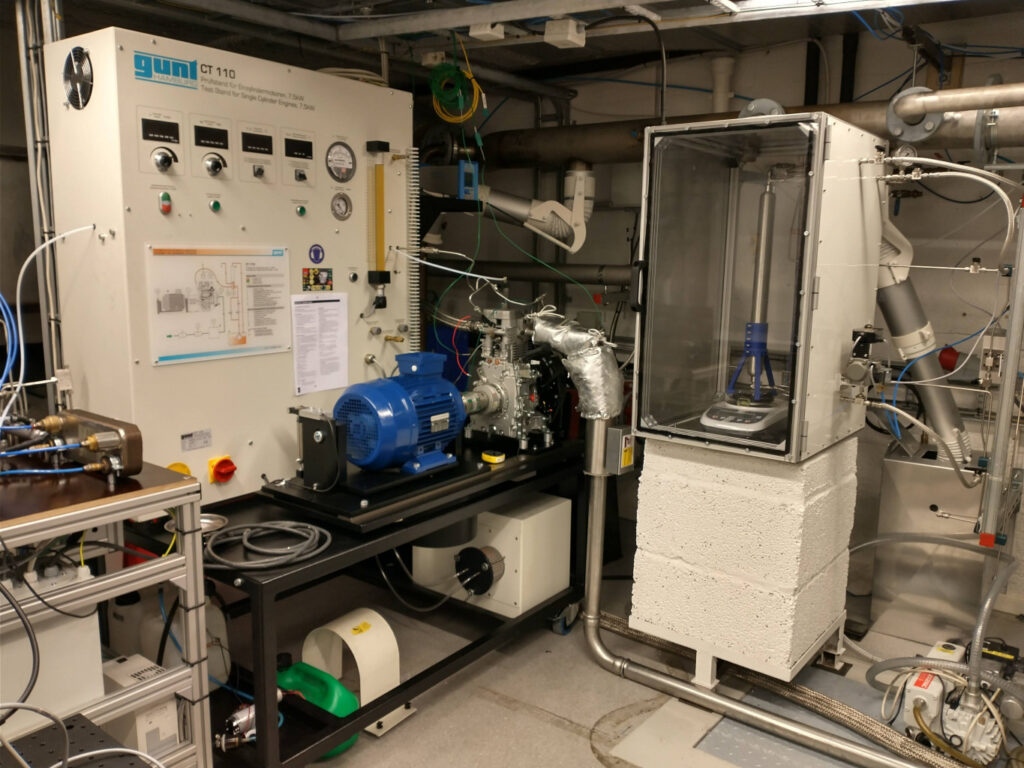Development of optimal diesel and ammonia injections strategy is supported through experimental work being conducted at NTNU within WP1. Single cylinder engine has been installed on a test trolley, coupled with AC motor and adjusted to work with diesel, common rail injector (DI) and a gasoline direct injection injector (GDI).

The engine cylinder head was modified to fit two injectors as the engine will be using pilot injection of diesel fuel supporting injection of liquid ammonia. Diesel injection is to be achieved by common rail injector, liquid ammonia injection will be performed by gasoline direction injection injector. The automatics for the system has been configured and coupled with the diesel and ammonia tanks with ammonia stored under pressure at ambient temperature.
Intake air system with inline air heater along with control equipment complete the test stand. The stand produced by Gunt for small engines has been selected for conducting experiments. Asynchronous motor is used to start the engine and then serves as a brake applying load. The measurements will be conducted for a set of variants and will include the information about:
- fuel consumption
- air mass flow rate along with energy requirements for air compression and heating,
- torque and speed
- emissions from the exhaust gases
Mechanical part of the stand is completed, engine control software is currently under development focusing on common rail injector with diesel fuel only at this stage.

